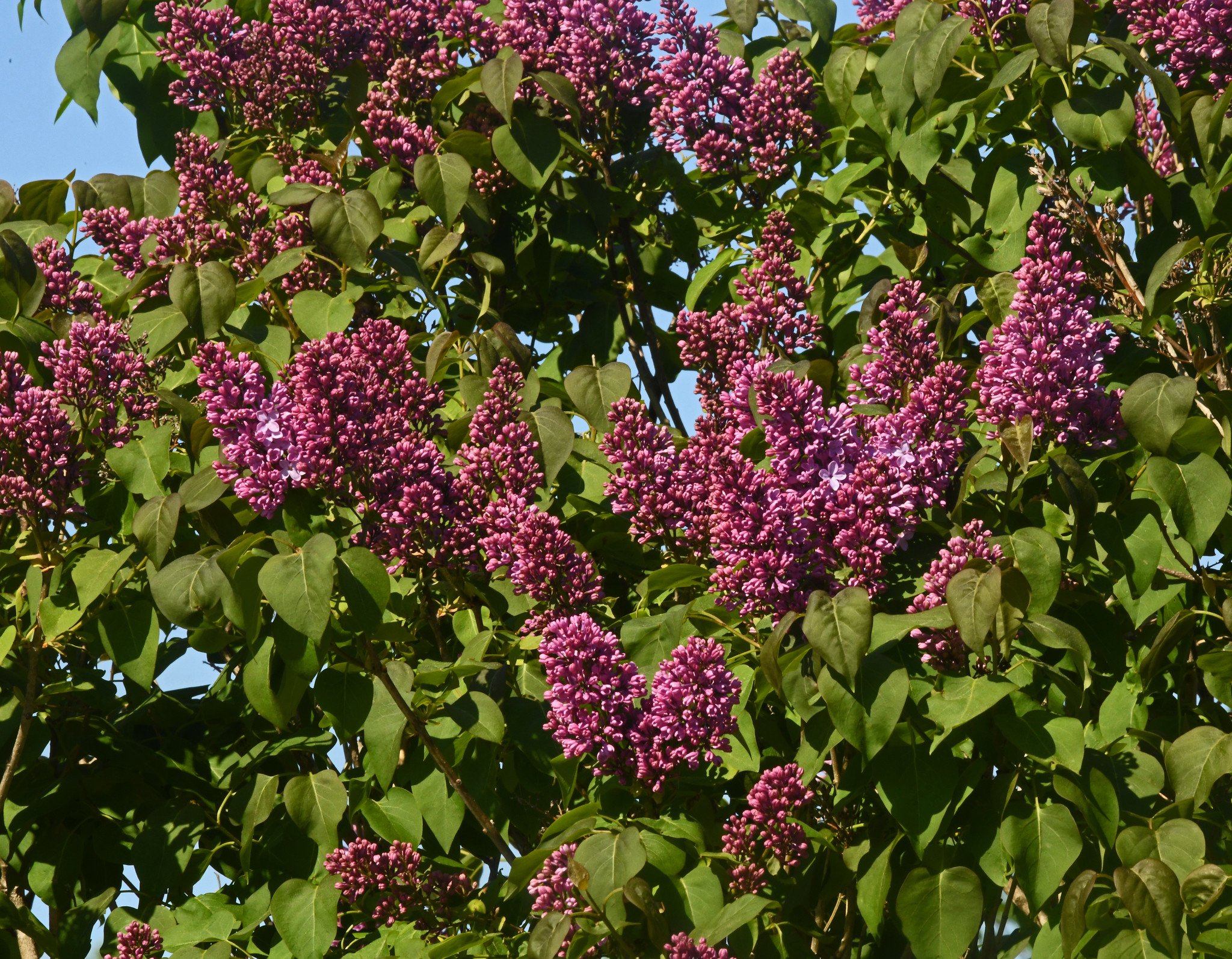May, true summer’s appetizer, was a little wetter and foggier than usual here on the coast this year. But she still managed to be her usual gorgeous and generous self: bringing us lush green grasses and leaves, coaxing out colorful buds and petals, and soothing us with warm days.
As usual, we begin our “wishing you were here” Postcards with the four iconic scenes that we monitor to record seasonal changes — the mountains breaching from Mount Desert Island; the island house peering down at Brooklin’s Naskeag Harbor; the “Blues” of the near-mountain called Blue Hill above the Town of Blue Hill, as seen across Blue Hill Bay, and the old red boathouse in Blue Hill’s Conary Cove:
Our woods and waters appeared to rejoice in their spring-to-summer passage through sun, rain, and fog:
As usual, May was a very active time for our fauna. Our fur-wearers of most interest included a young white-tailed deer buck who seemed sad for recently losing his first set of antlers, a cottontail rabbit that tried to burgle our house, a North American river otter who was tuckered out from impregnating as many females of his kind that he could find, and a pregnant doe sleeping late as the early morning sun rose:
As for feather bearers, the big drama in May was the repeated attacks by a young rogue male osprey on the nesting pair of ospreys that we monitor every year, a mature couple whom we’ve named Ozzie and Harriet. The jealous youngster who invaded the nest (and tried to do so to Harriet) was nearly killed by Ozzie, who repeatedly chased the invader off, after ripping out most of the youngster’s tail feathers and gashing him in the chest. Afterward, Ozzie and Harriet sat together in silent vigilance.
More patient males visiting the neighborhood included red-winged blackbirds who staked out territories and magnolia and other warblers who were deciding whether to stay or continue north. A great blue heron established a home base near one of our ponds; mallard drakes tried to attract mates by showing off their iridescence, and some bufflehead ducks that overwintered here decided to stay awhile.
Tri-colored bumblebees and other pollinators were very busy tending to all the new blossoms and black-capped chickadees — Maine’s state birds — complained about all newcomers:
As for our most ardent sun worshippers, painted turtles and bull frogs emerged from their murky winter quarters to enjoy the beginnings of the year’s warming radiance:
Of course, May is perhaps best known for its spectacular flora. In terms of trees and large bushes., the earliest bloomers were the subtly-hued shadblow trees with their burnished copper leaves and delicate white flowers:
Next on the color spectrum might be the gnarly old apple trees with their articulated branches and pink-cheeked buds and blossoms:
The color intensified in the plum trees, with their pink blossoms and reddish leaves, as well as in the crabapple trees with their thickly-studded branches of reds, pinks, and purples:
More subtle, yet still striking, were the less common yellow magnolia and white star magnolia flowers:
Of course, trees can be startling for reasons other than their colorful blossoms. Speciman trees such as the Camperdown elm in the Brooklin Cemetery and the weeping beech at Amen Farm leafed out fully in May:
While the yellows of forsythia flowers dropped to the ground before the end of May, the purples and whites of lilacs were emerging:
Similarly, the yellows of daffodils withered away, while the yellows of dandelions swept in:
In the sunny fields and dark woods, the bold, radiant leaves of lupine plants spread, while the delicate petals of the little star flowers searched for light:
In the bogs, the shy wild azalea known as rhodora made a modest appearance in purple while ferns and skunk cabbage boldly emerged:
In the gardens, begonias blossomed and allium buds were about to burst into flower:
The waterfront is an important area recreationally and commercially here, and much of it needs to be prepared in May for true summer’s activities. Docking floats need to be reinstalled at the ends of piers, mooring gear needs to be cleaned and returned to the depths, and boats need to be prepared and returned to where they belong.
On the commercial waterfront, May is a hiatus between scallop fishing and lobster fishing in coastal waters. Some vessels won’t take down their scallop-dredging masts and booms until June, when lobstering starts in earnest.
Finally, we consider the May full moon, traditionally named the Flower Moon for obvious reasons. This year, it was a “micromoon” — it’s orbit took it very far from us. But she still drew our tides to her and shone on trees that flowered in the darkness:
(All images in this post were taken in Down East Maine during May of 2025.)




































































































































